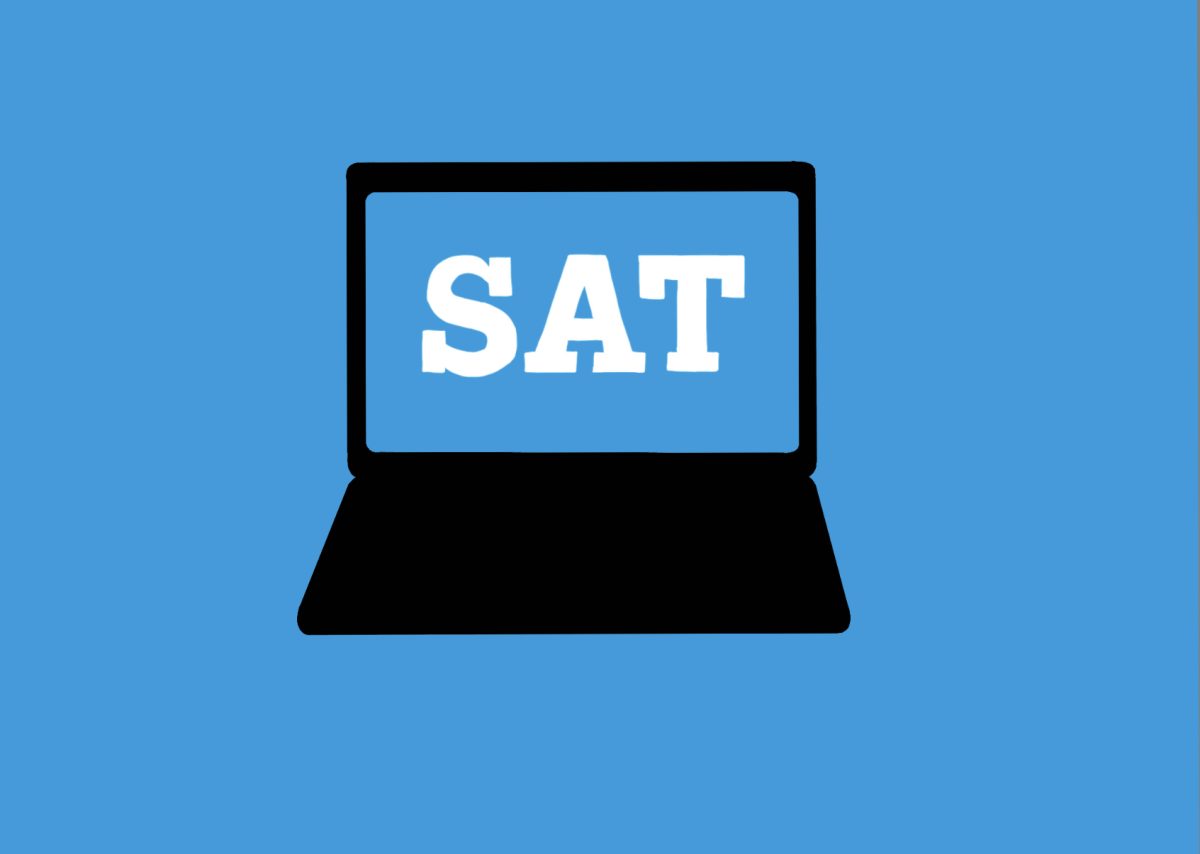The three hours students spend in a classroom accompanied by the sounds of SAT booklet pages flipping and a No. 2 pencil against paper are a universally stressful experience. When test reports come out, one student may avoid the College Board’s website like the plague while another sighs in relief at the impressive four-digit number.
However, students planning on taking it next spring will trade their Scantron sheet for an application called Bluebook. The College Board is transforming the test to be more relevant in today’s technology-reliant classrooms yet the shift to a digital format will not combat the trend of a decreasing number of students who submit scores.
Underclassmen took the newly digital PSAT/NMSQT on Oct. 12 as preparation for the new test. The SAT will now last two hours and 14 minutes instead of three hours and feature two sections: Reading and Writing, and Math. These sections will then be divided into two modules each with the student’s performance on Module 1 affecting the difficulty of questions one gets for Module 2.
Opinions for such a huge change of course will differ from student to student. One might enjoy feeling less worn out by the end of each section, or it could be a source of anxiety for a junior who is accustomed to the traditional pencil-and-paper format.
Changes which may be more popular include the quicker delivery of scores, shorter and more direct questions, and the new score report which will provide students with additional information about post-graduation paths.
While having its upsides, this new test possesses an apparent issue due to its status as a digital test alone: technological difficulties.
The internet at Roswell High School is a frequent topic of complaint among students because of its slow speed and spottiness in certain parts of the building. Students frequently take the SAT at different schools, but unfortunate internet situations can still disrupt their testing experience. Taking the SAT and ACT are already stressful enough as is, so the added load of technical troubles will add inessential concerns. Malfunctions may not directly deduct points, but the stress of getting kicked out of the test halfway through could hinder a student’s performance.
Outside of the possibility of technological conflicts, the smaller number of questions could do more harm than good to scores. Since the test is significantly shorter, each question is worth more. The digital SAT has 56 less questions than the paper version while continuing to be scored out of 1600. Incorrect answers originating from guesses or misinterpretations can weaken one far more than they would on the traditional test.
Students who strongly oppose the new format will be more hesitant on whether they should submit test scores if they feel it could hurt their application. Such a decision might not be so difficult considering the rising number of test-optional schools in recent years.
Many schools were already test-optional prior to the pandemic, but this became more widespread after COVID-19 took the world by storm. The National Center for Fair & Open Testing reported that over 2,000 schools are test-optional or test-free for fall 2023 applicants. 23 of these are public Georgia universities with exceptions being University of Georgia, Georgia Tech, and Georgia College and State University.
The SAT has also been subject to criticism over the years for the advantage that wealthy students have over lower-income students. The College Board offers test fee waivers which give the recipient two free SAT tests, unlimited score reports to send to colleges, and waived application fees among other benefits. Despite how these perks may be helpful to those who qualify, they’re incomparable to the leg-up students from higher-income households receive from birth.
Notably, there is no limit to how many times students can attempt the SAT, and one can take the ACT up to twelve times. Therefore, wealthy students have far more opportunities at achieving an ideal score along with access to pay for SAT and ACT tutors.
Although I doubt the SAT will vanish any time soon, this large shift will do little to change its slowly diminishing relevance among students. It’s a wonder what place the test, which was first administered on June 23, 1926, will have in the years following its hundredth anniversary.








